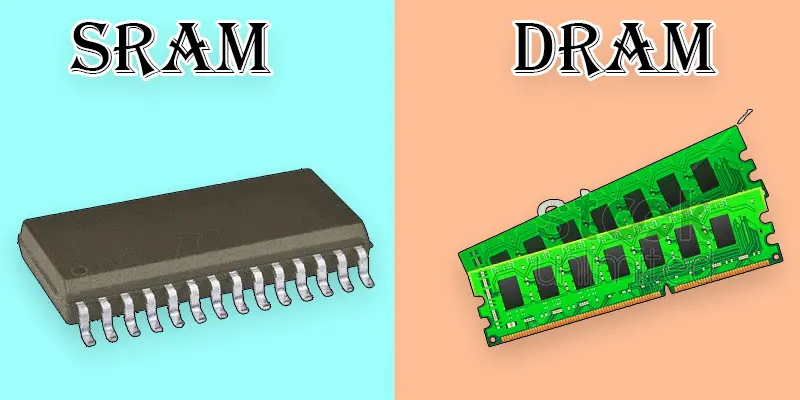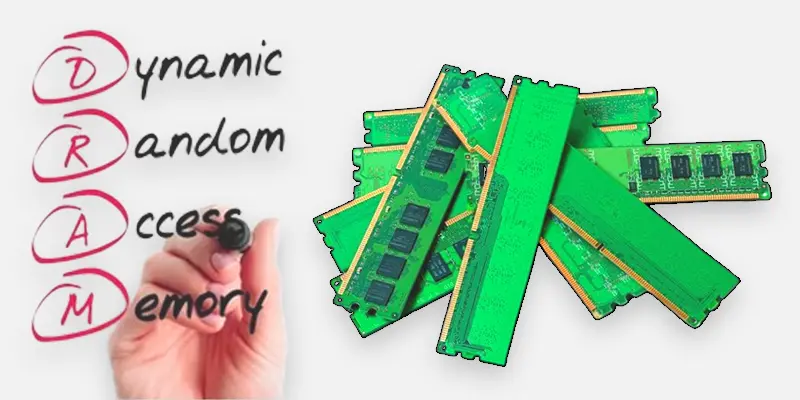SRAM vs DRAM | Which Memory Type Is Better?
Published: 5 Feb 2025
Difference Between Static RAM and Dynamic RAM
Ever wondered why some memories are fast but expensive, while others are cheap but slower? The key lies in the difference between SRAM and DRAM. SRAM is faster and doesn’t need refreshing, while DRAM can store more data but requires constant updates. This is why SRAM is used for speed (cache memory) and DRAM is used for storage (main RAM). If your computer feels slow, understanding this difference can help you choose the right memory for better performance and efficiency.
What is SRAM and DRAM?
SRAM (Static Random-Access Memory) and DRAM (Dynamic Random-Access Memory) are two widely used memory types in computer systems. SRAM is faster, doesn’t need refreshing, and is used for cache memory, while DRAM is slower, needs constant refreshing, and is used as main RAM. SRAM is more expensive but improves speed, whereas DRAM is cheaper and stores more data. Both work together to keep your computer running smoothly.
Difference between SRAM and DRAM in Computer Architecture
The main difference between SRAM and DRAM is speed and usage. SRAM is faster, doesn’t need refreshing, and is used for cache memory, while DRAM is slower, requires constant refreshing, and is used as main RAM. SRAM is expensive but boosts speed, whereas DRAM is cheaper and offers more storage.

| SRAM | DRAM |
|---|---|
| Static Random-Access Memory (SRAM). | Dynamic Random-Access Memory (DRAM). |
| A type of memory that doesn’t require refreshing to retain data. | A type of memory that requires constant refreshing to retain data. |
| Used in CPU cache memory. | Used as main memory in computers. |
| Faster than DRAM. | Slower compared to SRAM. |
| More expensive to manufacture. | Cheaper to produce. |
| Uses less energy. | Requires more energy. |
| Offers limited storage space. | Provides larger storage capacity. |
| Does not require refreshing. | Requires constant refreshing to maintain data. |
| Mainly used in cache memory and registers. | Primarily used as the main memory in systems. |
| Retains data even without power. | Data is erased when power is lost. |
| More complex and costly to manufacture. | Easier and cheaper to manufacture. |
| Built using flip-flops and latches. | Built using capacitors and transistors. |
| Takes up more space for the same storage. | Takes up less space for the same storage. |
| More durable and long-lasting. | Less durable compared to SRAM. |
| Found in mobile devices, processors, and routers. | Found in desktops, laptops, and gaming systems. |
| Has very low latency and quick access. | Has higher latency and slower access. |
| Less sensitive to voltage changes. | More sensitive to voltage fluctuations. |
| Provides higher data integrity. | Can be affected by data corruption if not refreshed. |
| Uses static technology. | Uses dynamic technology. |
| Higher due to its complexity. | Lower because of its simpler design. |
Computers use both SRAM and DRAM to balance performance and cost. SRAM provides fast access speeds for critical tasks, while DRAM offers larger storage capacity at a lower cost for overall system memory.
SRAM
- Faster data access speeds up processing.
- No need for constant refreshing, saving power.
- More reliable with less risk of data corruption.
- Used in cache memory for quick CPU access.
- It provides low latency and is ideal for high-speed operations.
DRAM
- Higher storage capacity allows for more data storage.
- Cheaper to produce, reducing overall system cost.
- Needs constant refreshing, which increases power consumption.
- Slower than SRAM but used for main memory in computers.
- Offers a good balance between cost and capacity for larger data needs.

Conclusion about DRAM vs SRAM Speed and Performance
Understanding the Compare static RAM and dynamic RAM performance is crucial for anyone interested in computer hardware and performance. While SRAM is faster and more reliable, but costly, DRAM offers higher storage capacity at a lower price. Whether you’re upgrading your computer or simply expanding your knowledge, knowing these differences can help you make smarter decisions. Keep exploring this topic to better understand how memory impacts overall system performance.
FAQS
Yes, SRAM is faster than DRAM. SRAM does not require refreshing, allowing quicker data access, while DRAM needs constant refreshing, which slows down its performance.
SRAM is better for speed and performance, making it ideal for cache memory. DRAM is better for larger storage at a lower cost, but it’s slower due to the need for constant refreshing.
DRAM is cheaper than SRAM because it is simpler to manufacture. DRAM uses capacitors and transistors, which are easier and less costly to produce, while SRAM uses flip-flops and latches, which are more complex and expensive to make.
A computer can technically work without SRAM, but its performance would be significantly slower. Without SRAM, the system would rely entirely on DRAM, resulting in slower data access and processing.

- Be Respectful
- Stay Relevant
- Stay Positive
- True Feedback
- Encourage Discussion
- Avoid Spamming
- No Fake News
- Don't Copy-Paste
- No Personal Attacks

- Be Respectful
- Stay Relevant
- Stay Positive
- True Feedback
- Encourage Discussion
- Avoid Spamming
- No Fake News
- Don't Copy-Paste
- No Personal Attacks





